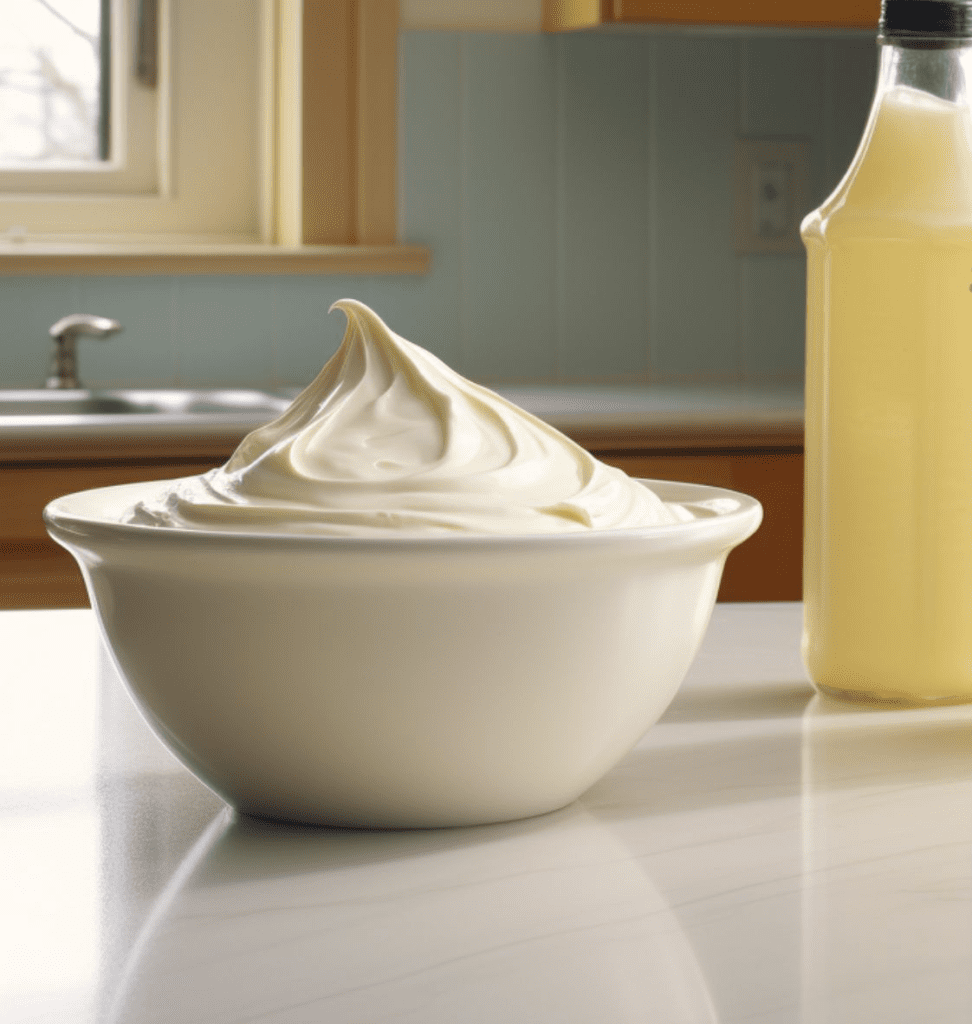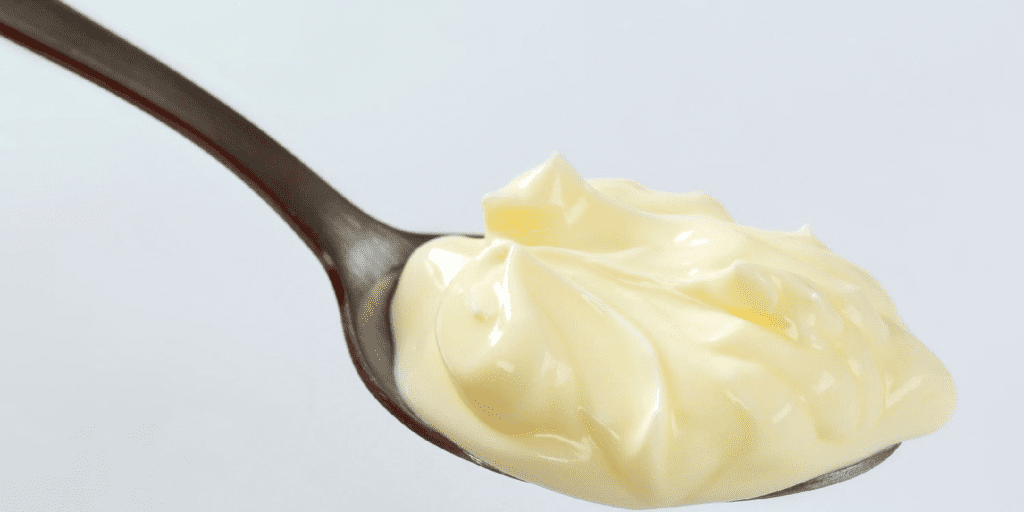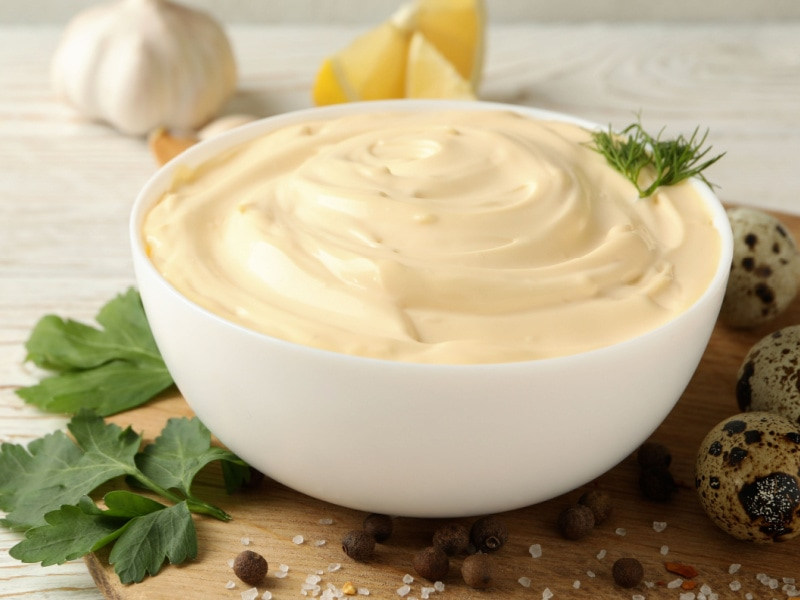Mayonnaise and Miracle Whip are two condiments that are often confused due to their similar appearance and usage. They both serve as creamy bases for salads, sandwiches, and a variety of recipes, but when you take a closer look, you’ll find that mayo and Miracle Whip have distinct differences in ingredients, taste, and nutritional value. These differences can influence which one you choose based on personal preference or dietary goals. In this article, we’ll explore the key factors that set these two popular spreads apart.

Ingredients: What’s in Mayo vs. Miracle Whip?
The first major difference between mayonnaise and Miracle Whip comes down to their ingredients.
- Mayonnaise Ingredients: Traditional mayonnaise is made from a simple blend of oil, egg yolks, vinegar or lemon juice, and seasonings like mustard or salt. Its simplicity is what makes it such a versatile ingredient in the kitchen. The rich combination of oil and egg yolks creates a creamy, smooth texture and a neutral flavor that pairs well with a wide variety of foods.
- Miracle Whip Ingredients: Miracle Whip, on the other hand, contains several additional ingredients that set it apart. It includes high fructose corn syrup, modified cornstarch, and various spices, giving it a sweeter and more processed flavor profile. Because Miracle Whip doesn’t meet the standards set by the Food and Drug Administration (FDA) for mayonnaise (due to its lower oil content), it is technically classified as a “dressing” rather than a true mayo.
These ingredient differences explain why mayo has a more straightforward, subtle taste, while Miracle Whip brings a noticeable sweet and tangy kick to dishes.
Taste and Texture: A Battle of Flavors
The second significant difference between mayonnaise and Miracle Whip is in their flavor and texture.
- Mayonnaise Taste: Mayonnaise offers a creamy, smooth consistency with a mild tanginess that comes from the vinegar or lemon juice. This neutral flavor makes it a great addition to recipes where you don’t want to overpower other ingredients. Think of it as the quiet hero in dishes like tuna salad or deviled eggs, where its job is to add moisture and richness without stealing the spotlight.
- Miracle Whip Taste: Miracle Whip, however, is bold. It’s tangy, sweet, and spicier than mayo, thanks to its added sugars and spices. The flavor is far more pronounced, and it can change the overall taste of a dish. Some people love its unique zing, while others might find it a bit too strong for delicate recipes. Texturally, Miracle Whip tends to be lighter and fluffier than mayo, which comes from its different emulsification process.
Ultimately, the choice between these two comes down to personal taste. If you prefer a more subtle, creamy spread, mayonnaise is likely your go-to. If you like a condiment with a bit more personality, you might lean toward Miracle Whip.
Nutritional Comparison: Fat and Calories
When it comes to nutrition, there are some key differences between mayo and Miracle Whip, especially if you’re watching your fat or calorie intake.
- Mayonnaise Nutritional Content: Mayonnaise, with its high oil content, is richer in both calories and fat. A tablespoon of regular mayo typically contains around 10 grams of fat and 90 calories. This makes it a more indulgent option, but for those who enjoy the richness and don’t mind the fat content, it can be a great addition to meals.
- Miracle Whip Nutritional Content: Miracle Whip is marketed as a lower-fat alternative to mayonnaise, containing roughly half the fat and calories. A tablespoon of Miracle Whip contains about 3.5 grams of fat and 40 calories. However, the reduced fat is often compensated for with added sugars, which can be a consideration for those looking to avoid excess sugar in their diet.
While Miracle Whip may seem like the healthier choice in terms of fat and calories, it’s important to weigh the trade-off of added sugars, especially if you’re conscious of your sugar intake.
Usage in Recipes: When to Choose Mayo vs. Miracle Whip
Both mayonnaise and Miracle Whip have their unique roles in the kitchen, but when should you use one over the other?

- Mayonnaise in Recipes: Mayo is often the preferred choice in recipes where a neutral, creamy texture is needed without altering the dish’s primary flavor. It’s ideal for classic dishes like potato salad, coleslaw, and homemade sauces. Many people also use mayo as a base for aioli or to add richness to grilled sandwiches like the classic BLT.
- Miracle Whip in Recipes: Miracle Whip shines in recipes where you want a bit of extra flavor. Its sweet and tangy profile can elevate dishes like pasta salad or slaws. It’s also a popular choice for spreading on sandwiches when you want a bit more zing than traditional mayo offers. However, it might not be the best choice for more refined dishes, as its sweetness can sometimes clash with more delicate flavors.
Brand and Perception: Household Names
Another factor that sets mayo and Miracle Whip apart is the way they’re perceived by consumers.
- Mayonnaise Brands: There are many different brands of mayonnaise, ranging from generic store brands to more gourmet options. Some people have strong brand loyalty, while others don’t mind switching between varieties. You’ll find everything from regular mayo to light, reduced-fat, and even avocado-based versions, giving consumers plenty of options based on their dietary preferences.
- Miracle Whip Brand: Miracle Whip, on the other hand, is a specific product created by Kraft Heinz. As a brand-specific item, it maintains the same flavor profile from jar to jar, and you won’t find many variations like you would with mayo. People who love Miracle Whip tend to stick with it, appreciating its consistent taste.
Final Thoughts: Choosing the Right Condiment for You
So, what’s the final verdict in the mayo vs. Miracle Whip debate? It really boils down to personal preference and what you’re looking for in a condiment.

If you prefer a more traditional, creamy, and neutral flavor, then mayonnaise is your best bet. It’s versatile and works well in a wide range of recipes. However, if you’re someone who enjoys a sweeter, tangier taste, then Miracle Whip might be your go-to condiment. It’s a bolder option and can add a unique twist to your favorite dishes.
In the end, both mayonnaise and Miracle Whip have their place in the kitchen. Whether you’re making a sandwich, whipping up a salad, or creating a homemade dressing, understanding the key differences between these two condiments will help you make the best choice for your recipes.


